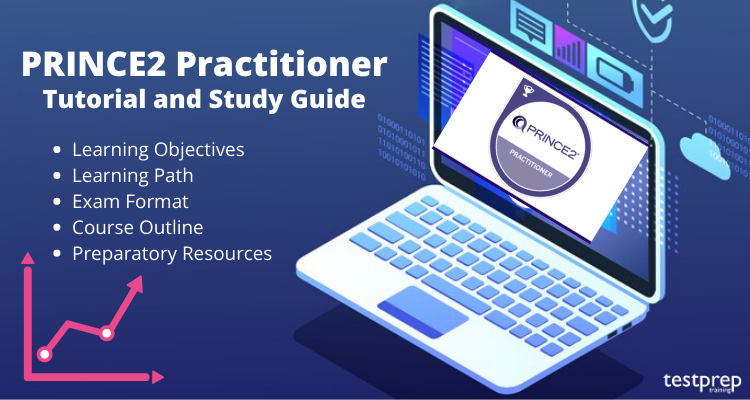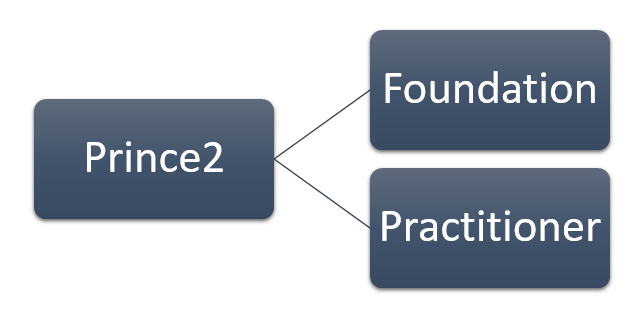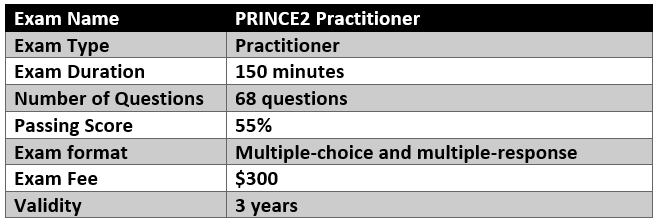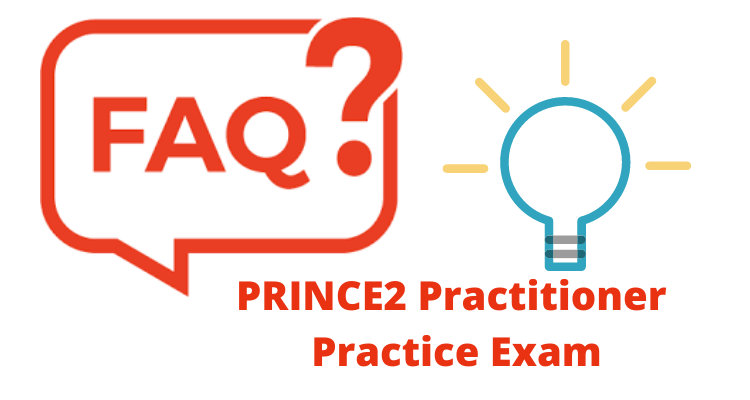PRINCE2 Practitioner Exam
PRINCE2 is the world’s most practised project management methodology and a standard developed and used extensively by project managers around the world:
- The qualification recognizes around the world
- Improved alignment and communications
- A common consistent approach to project management
- Influence the organizational culture.
Established and proven best practice in project management, PRINCE2 is a manageable method that guides the candidate through the essentials for managing a successful project, regardless of type or scale. It can be tailored to meet an organization or industry-specific requirement. Attaining the Practitioner qualification is only one part of becoming a successful and effective project manager. It is necessary to ensure that the candidate supplements this with real-life experience working on projects, in addition to investing in personal professional development and wider training.
Target Audience
PRINCE2 Practitioner certification is suitable for anyone managing projects. This could be a portion of a formal project management function or a role which includes project management as part of day-to-day work. The Practitioner certification tries to confirm that the candidate has sufficient knowledge and understanding to implement and tailor the method in a range of different project environments and scenarios.
- This certification is aimed at project managers, aspiring project managers and anyone who manages projects.
- Project Board members (e.g. Senior Responsible Owners)
- Team Managers (e.g. Product Delivery Managers)
- Project Assurance (e.g. Business Change Analysts)
- Project Support (e.g. Project and Programme Office personnel)
Learning Objectives
Learning the objectives of the PRINCE2 Practitioner Practice Exam are the most important steps in order to successfully pass the exam. The candidate should understand and learn them very well. So, the following are the objectives for the PRINCE2 Practitioner Practice Exam.
- Apply the PRINCE2 principles in context
- Apply and tailor relevant aspects of PRINCE2 themes in context
- Apply (and tailor) relevant aspects of PRINCE2 processes in context
Learning Path
The PRINCE2 6th Edition Certification Scheme builds on PRINCE2 5th Edition but places a new emphasis on tailoring the method to the needs of organizations and project management environments. It comprises the PRINCE2 Foundation and Practitioner qualifications as well as the PRINCE2 Agile certification scheme.
PRINCE2 Practitioner Exam Format
Here we are going to discuss the basic information and details about the exam. The PRINCE2 Practitioner Exam Questions are in the form of multiple-choice and multiple-response questions. The candidate needs to get a minimum of 55% in order to pass the exam. Also, the candidate will be given 150 minutes to complete the exam. The certification will be valid for 3 years. Moreover, PRINCE2 Practitioner certification cost is $300 USD
PRINCE2 Practitioner Prerequisites
In order to sit the PRINCE2 Practitioner exam, the candidate must be able to provide proof of passing one of the following exams:
- PRINCE2 Foundation
- Project Management Professional (PMP)
- Certified Associate in Project Management (CAPM)
- IPMA Level A (Certified Projects Director)
- IPMA Level B (Certified Senior Project Manager)
- IPMA Level C (Certified Project Manager)
- IPMA Level D (Certified Project Management Associate)
PRINCE2 Practitioner Course Online
Axelos has divided the syllabus into various sections. The PRINCE2 Practitioner Syllabus includes 3 objectives and sub-topics in it. The detailed course outline is mentioned below:
Apply the PRINCE2 principles in context
1.1 Analyze the application of PRINCE2 principles in context
a) Ensure continued business justification (2.1)
b) Learn from experience (2.2)
c) Define roles, responsibilities and relationships (2.3)
d) Manage by stages (2.4)
e) Manage by exception (2.5)
f) Focus on products (2.6)
g) Tailor to suit the project (2.7)
AXELOS Documentation: PRINCE2 – professional skills for non-project managers
Understand how to apply effective people management in successful projects
2.1 Assess whether an approach to leadership and management of teams is appropriate (3.3, 3.1)
2.2 Assess whether an approach to leadership and management of change within a project, and people affected by a project, is appropriate (3.2, 3.1)
2.3 Apply the approach to the following:
- communications (3.4)
- people central to the method (3.5)
2.4 Apply the key management products required to support the people element of projects:
- communication management approach (3.4)
- change management approach (3.2)
PRINCE2 Practitioner Interview Questions
Understand how to apply and tailor relevant aspects of PRINCE2 practices in context
3.1 Business case
3.1.1 Apply the PRINCE2 ‘business case’ practice, demonstrating an understanding of:
a) the key management products required to support the ‘business case’ practice (5.5):
o business case
o PID: benefits management approach
o PID: sustainability management approach
o project brief
b) The areas of focus for key roles associated with the ‘business case’ practice (tab 5.1)
c) Effective management and associated techniques (5.2, 5.3)
3.1.2 Analyse whether an approach to applying the ‘business case’ practice is effective and fit for purpose, taking into consideration: the PRINCE2 principles, and the effective management and associated techniques of the practice, and tailoring to the project’s environment/context (5.2, 5.3, 5.4, 5.7,)
3.2 Organizing
3.2.1 Apply the PRINCE2 ‘organizing’ practice, demonstrating an understanding of:
a) the key management products required to support the ‘organizing’ practice (6.5):
o PID: project management team structure
o PID: role descriptions
o PID: commercial management approach
b) The areas of focus for key roles associated with the ‘organizing’ practice (tab 6.4)
c) Effective management and associated techniques (6.2, 6.3)
3.2.2 Analyse whether an approach to applying the ‘organizing’ practice is effective and fit for purpose, taking into consideration: the PRINCE2 principles, and the effective management and associated techniques of the practice, and tailoring to the project’s environment/context (6.2, 6.3, 6.4, 6.7)
3.3 Plans
3.3.1 Apply the PRINCE2 ‘plans’ practice, demonstrating an understanding of:
a) the key management products required to support the ‘plans’ practice (7.5):
o plan (project, stage, team & exception plans)
o project product description
o work package description
b) The areas of focus for key roles associated with the ‘plans’ practice (tab 7.1)
c) Effective management and associated techniques (7.2, 7.3)
3.3.2 Analyse whether an approach to applying the ‘plans’ practice is effective and fit for purpose, taking into consideration: the PRINCE2 principles, and the effective
management and associated techniques of the practice, and tailoring to the project’s environment/context (7.2, 7.3, 7.4, 7.7)
3.4 Quality
3.4.1 Apply the PRINCE2 ‘quality’ practice, demonstrating an understanding of:
a) the key management products required to support the ‘quality’ practice (8.5):
o product description
o project log: product register
o PID: quality management approach
o project log: quality register
b) The areas of focus for key roles associated with the ‘quality’ practice (tab 8.2)
c) Effective management and associated techniques (8.2, 8.3)
3.4.2 Analyse whether an approach to applying the ‘quality’ practice is effective and fit for purpose, taking into consideration: the PRINCE2 principles, and the effective management and associated techniques of the practice, and tailoring to the project’s environment/context (8.2, 8.3, 8.4, 8.7)
3.5 Risk
3.5.1 Apply the PRINCE2 ‘risk’ practice, demonstrating an understanding of:
a) the key management products required to support the ‘risk’ practice (9.5):
o PID: risk management approach
o project log: risk register
b) The areas of focus for key roles associated with the ‘risk’ practice (tab 9.3)
c) Effective management and associated techniques (9.2, 9.3)
3.5.2 Analyse whether an approach to applying the ‘risk’ practice is effective and fit for purpose, taking into consideration: the PRINCE2 principles, and the effective management and associated techniques of the practice, and tailoring to the project’s environment/context (9.2, 9.3, 9.4, 9.7)
3.6 Issues
3.6.1 Apply the PRINCE2 ‘issues’ practice, demonstrating an understanding of:
a) the key management products required to support the ‘issues’ practice (10.5):
o PID: issue management approach
o issue register
o issue report
b) The areas of focus for key roles associated with the ‘issues’ practice (tab 10.2)
c) Effective management and associated techniques (10.2, 10.3)
3.6.2 Analyse whether an approach to applying the ‘issues’ practice is effective and fit for purpose, taking into consideration: the PRINCE2 principles, and the effective management and associated techniques of the practice, and tailoring to the project’s environment/context (10.2, 10.3, 10.4, 10.7)
3.7 Progress
3.7.1 Apply the PRINCE2 ‘progress’ practice, demonstrating an understanding of:
a) the key management products required to support the ‘progress’ practice (11.5):
o project log: daily log
o project log: lessons log
o lessons report
o end stage report
o end project report
o checkpoint report
o highlight report
o exception report
o PID: digital and data management approach
b) The areas of focus for key roles associated with the ‘progress’ practice (tab 11.3)
Understand how to apply (and tailor) relevant aspects of PRINCE2 processes in context
4.1 Starting up a project
4.1.1 Carry out the ‘starting up a project’ process, demonstrating an understanding of:
a) The activities, inputs and outputs (tab 13.1, 13.4)
b) The recommended roles and responsibilities within the process (RACI table) (tab 13.2)
c) How the practices are applied (tab 13.3)
4.1.2 Analyse whether the ‘starting up a project’ process activities, roles and responsibilities are effective and fit for purpose, taking into consideration: tailoring to the project’s environment/context, the PRINCE2 practices, and the purpose and objectives of the process (13.1, 13.2, 13.4, 13.5, 13.6, 13.7)
4.2 Directing a project
4.2.1 Carry out the ‘directing a project’ process, demonstrating an understanding of:
a) The activities, inputs and outputs (tab 14.1, 14.4)
b) The recommended roles and responsibilities within the process (RACI table) (tab 14.2)
c) How the practices are applied (tab 14.3)
4.2.2 Analyse whether the ‘directing a project’ process activities, roles and responsibilities are effective and fit for purpose, taking into consideration: tailoring to the project’s environment/context, the PRINCE2 practices, and the purpose and objectives of the process (14.1, 14.2, 14.4, 14.5, 14.6, 14.7)
4.3 Initiating a project
4.3.1 Carry out the ‘initiating a project’ process, demonstrating an understanding of:
a) The activities, inputs and outputs (tab 15.1, 15.4)
b) The recommended roles and responsibilities within the process (RACI table) (tab 15.2)
c) How the practices are applied (tab 15.3)
4.3.2 Analyse whether the ‘initiating a project’ process activities, roles and responsibilities are effective and fit for purpose, taking into consideration: tailoring to the project’s environment/context, the PRINCE2 practices, and the purpose and objectives of the process (15.1, 15.2, 15.4, 15.5, 15.6, 15.7)
4.4 Controlling a stage
4.4.1 Carry out the ‘controlling a stage’ process, demonstrating an understanding of:
a) The activities, inputs and outputs (Tab 16.1, 16.4)
b) The recommended roles and responsibilities within the process (RACI table) (tab 16.2)
c) How the practices are applied (tab 16.3)
4.4.2 Analyse whether the ‘controlling a stage’ process activities, roles and responsibilities are effective and fit for purpose, taking into consideration: tailoring to the project’s environment/context, the PRINCE2 practices, and the purpose and objectives of the process (16.1, 16.2, 16.4, 16.5, 16.6, 16.7)
4.5 Managing product delivery
4.5.1 Carry out the ‘managing product delivery’ process, demonstrating an understanding of:
a) The activities, inputs and outputs (tab 17.1, 17.4)
b) The recommended roles and responsibilities within the process (RACI table) (tab 17.2)
c) How the practices are applied (tab 17.3)
4.5.2 Analyse whether the ‘managing product delivery’ process activities, roles and responsibilities are effective and fit for purpose, taking into consideration: tailoring to the project’s environment/context, the PRINCE2 practices, and the purpose and objectives of the process (17.1, 17.2, 17.4, 17.5, 17.6, 17.7)
4.6 Managing a stage boundary
4.6.1 Carry out the ‘managing a stage boundary’ process, demonstrating an understanding of:
a) The activities, inputs and outputs (tab 18.1, 18.4)
b) The recommended roles and responsibilities within the process (RACI table) (tab 18.2)
c) How the practices are applied (tab 18.3)
4.6.2 Analyse whether the ‘managing a stage boundary’ process activities, roles and responsibilities are effective and fit for purpose, taking into consideration: tailoring to the project’s environment/context, the PRINCE2 practices, and the purpose and objectives of the process (18.1, 18.2, 18.4, 18.5, 18.6, 18.7)
4.7 Closing a project
4.7.1 Carry out the ‘closing a project’ process, demonstrating an understanding of:
a) The activities, inputs and outputs (tab 19.1, 19.4)
b) The recommended roles and responsibilities within the process (RACI table) (tab 19.2)
c) How the practices are applied (tab 19.3)
4.7.2 Analyse whether the ‘closing a project’ process activities, roles and responsibilities are effective and fit for purpose, taking into consideration: tailoring to the project’s environment/context, the PRINCE2 practices, and the purpose and objectives of the process (19.1, 19.2, 19.4, 19.5, 19.6, 19.7)
Exam policies
The exam policies for the AXELOS certifications include the Exam term and conditions, renewal and recertifications, examination prerequisites, failing and retaking the exam, privacy and policy regarding the examinations. We suggest candidates to once visit the official site of AXELOS and read all the related information.
PRINCE2 Practitioner Practice Exam FAQs
PRINCE2 Practitioner Practice Exam Preparatory Resources
PRINCE2 Practitioner Exam Preparations are quite tough. To earn the certification you need a focused approach. The Exam needs complete learning, understanding and hard work. So, here we are suggesting some steps which the candidate can refer to and prepare for the exam wit our PRINCE2 Practitioner Study Guide.
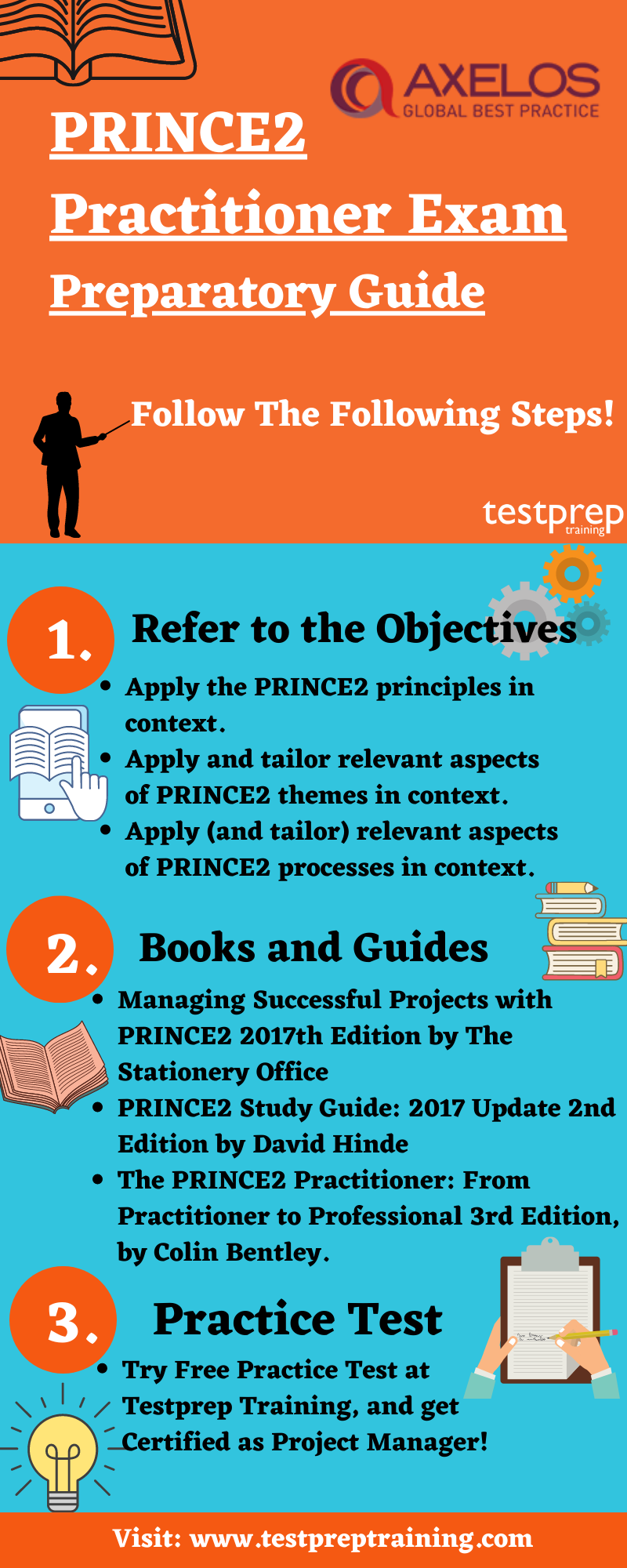
Visit the Official Page
The first step in the preparation guide should be visiting the official website of the AXELOS and collecting the most reliable information. The official website offers each and every information such as exam guide, blueprint, whitepapers, case studies, policies, faqs etc.
AXELOS Whitepares and Blogs
The AXELOS offers its official whitepapers, blogs, case studies, and webinars to help you earn the PRINCE2 Practitioner Certificate. These are the most important and reliable resources while preparing for the PRINCE2 Practitioner Practice Exam. These resources will provide excellent knowledge and understanding of various topics related to the PRINCE2 Practitioner Practice Exam. So, the candidate should try these resources.
Training Program
AXELOS itself offers its official training program on each and every xam. The candidate can register themselves with AXELOS and can take advantage of the training program. The PRINCE2 Practitioner Training Manual will provide the understanding, knowledge and skills of the particular exam. Also, there are many other websites available on the internet which offer these training programs, the candidate can choose whichever they want.
Grab Some Books
The next step should be gathering some books. The candidate should go for the PRINCE2 Practitioner Exam Books provide a complete understanding of the exam concepts. To make your work easy, we are recommending some books below which you can refer to:
- Managing Successful Projects with PRINCE2 2017th Edition by The Stationery Office
- PRINCE2 Study Guide: 2017 Update 2nd Edition by David Hinde
- The PRINCE2 Practitioner: From Practitioner to Professional 3rd Edition, by Colin Bentley.
Practice Test
PRINCE2 Practitioner Practice Exam are the most valuable resource in the preparation guide. Once the candidate believes that they are prepared enough then they can try their hands on the practice test. The practice test will help the candidate to acknowledge their weak areas so that candidate can word upon them.

